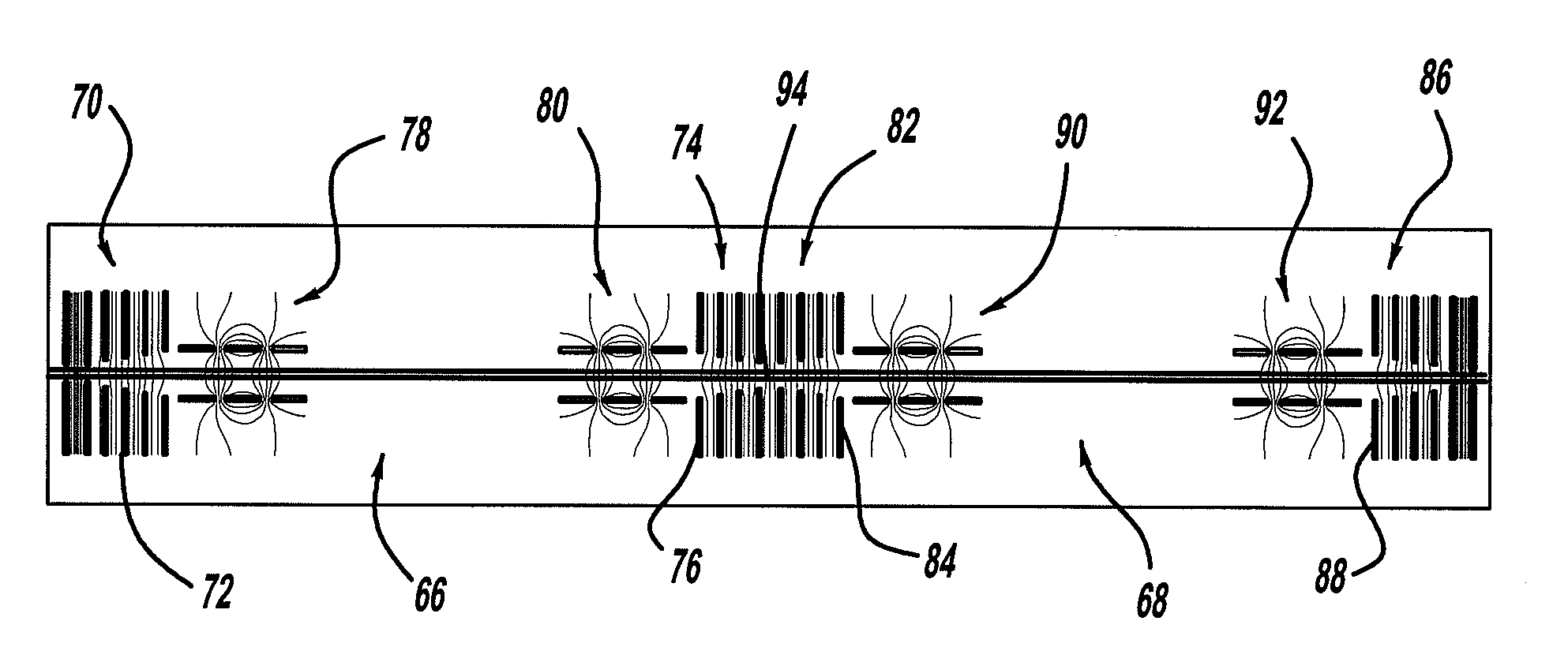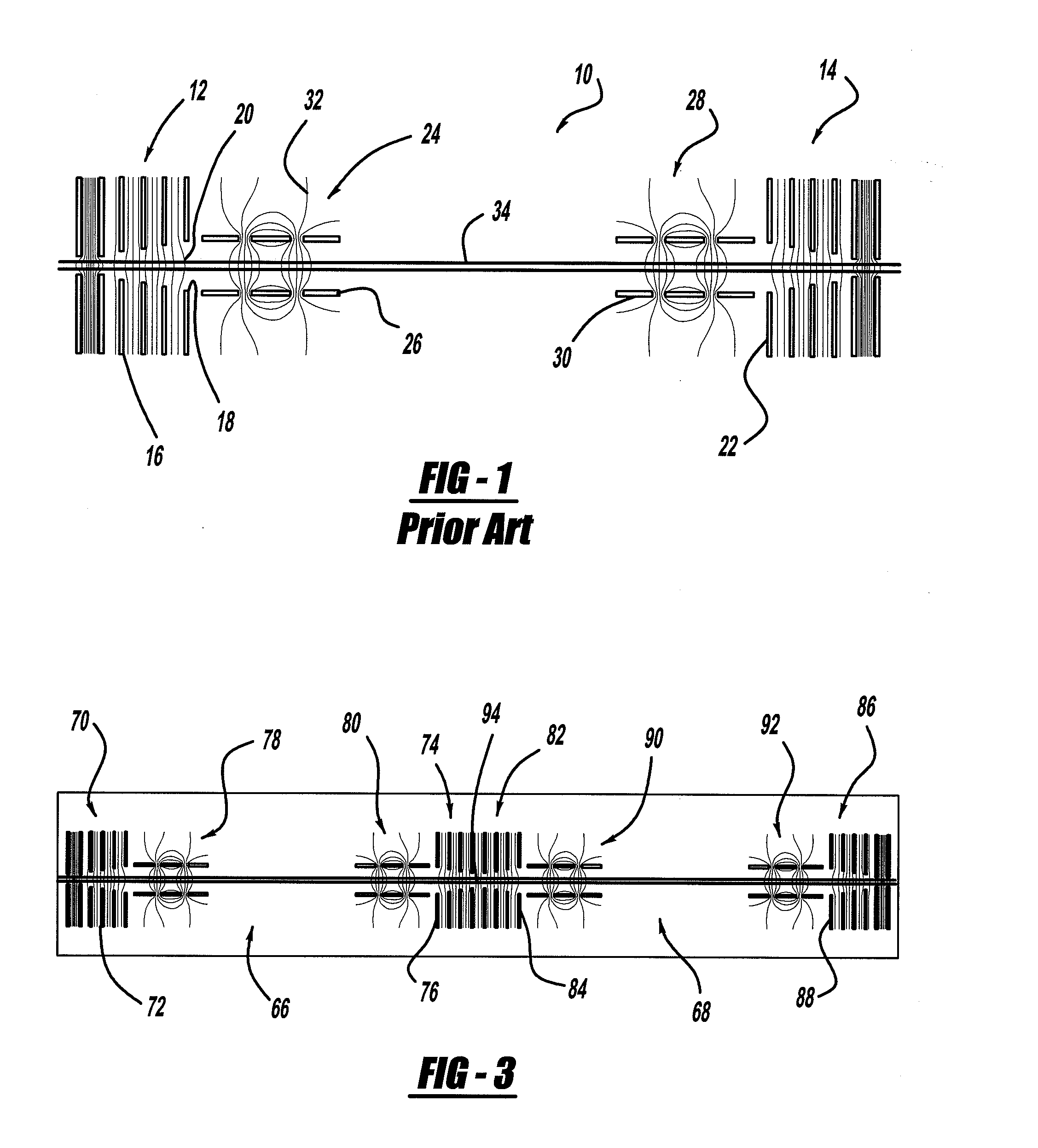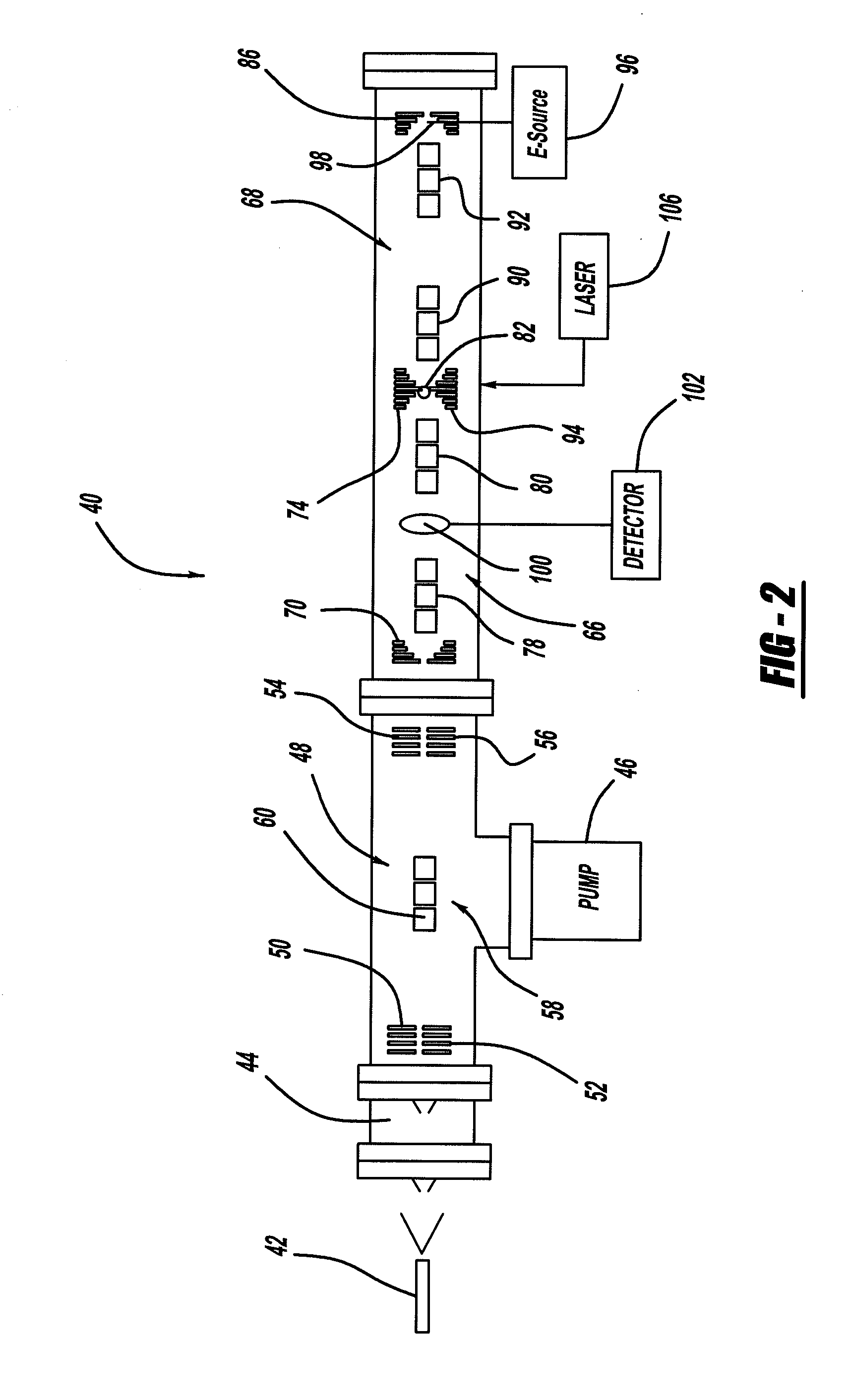Coupled Electrostatic Ion and Electron Traps for Electron Capture Dissociation - Tandem Mass Spectrometry
a technology of electrostatic ions and electron traps, applied in the field of mass spectrometry, can solve the problems of general loss of information related to the presence and location of post-translational modifications (ptm), and many obstacles remain
- Summary
- Abstract
- Description
- Claims
- Application Information
AI Technical Summary
Problems solved by technology
Method used
Image
Examples
Embodiment Construction
[0023]The following discussion of the embodiments of the invention directed to a mass spectrometer employing an electrostatic ion trap and an electron trap is merely exemplary in nature, and is in no way intended to limit the invention or its applications or uses.
[0024]The present invention proposes a tandem mass spectrometer employing an electrostatic ion trap to isolate ions. The proposed spectrometer will be able to establish whether ergodic or non-ergodic dissociation pathways will be most effective for nucleotide sequencing applications by also examining these systems via electron capture or VUV dissociation. As discussed above, broad use of ECD is typically not possible because of limitations to expensive and complex Fourier transform ion site electron resonance mass spectrometers. These are difficult conditions to achieve in conventional quadrupole ion traps. These obstacles may be overcome using simple electrostatic traps with conjoint ion and electron reflectors. This novel...
PUM
 Login to View More
Login to View More Abstract
Description
Claims
Application Information
 Login to View More
Login to View More - R&D
- Intellectual Property
- Life Sciences
- Materials
- Tech Scout
- Unparalleled Data Quality
- Higher Quality Content
- 60% Fewer Hallucinations
Browse by: Latest US Patents, China's latest patents, Technical Efficacy Thesaurus, Application Domain, Technology Topic, Popular Technical Reports.
© 2025 PatSnap. All rights reserved.Legal|Privacy policy|Modern Slavery Act Transparency Statement|Sitemap|About US| Contact US: help@patsnap.com



